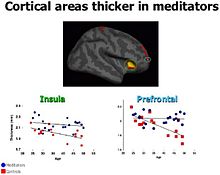Ruwan M Jayatunge M.D.
Meditation offers a rich and complex field of study (Shapiro et al., 2010). The Western research on meditation largely began in the 1960s (Rao, 1989). Meditation research has come a long way (Loizzo, 2014) and the research on meditation is advancing (Sparby, 2018). According to the US National Library of Medicine, pubmed.com (2018) there are over 4,000 peer-reviewed scientific articles on the science of meditation exist. The medical researchers are interested in studying the therapeutic effects of meditation. They apply scientific methods and reasoning to study the meditators. Clinical research on meditation focuses on randomized controlled trials for therapeutic applications. The main areas of meditation studies related to clinical conditions have been cancer care, depression, and pain (Caspi &, Burleson, 2005).
The researchers use modern scientific techniques and instruments to study the neural activity during meditation. There has been considerable research examining the psychological and physiological effects of meditation (Andresen, 2000). A vast amount of research on meditation has occurred in the past few decades with mixed results (Holmes, 1987; Rajaraman, 2013). According to Sedlmeier and team (2018) meditation research lacks a sound theoretical background and suffers from methodological shortcomings concerning measurement techniques and study design. Some meditation research studies have unique conceptual and methodological problems. Meditation changes the body and mind together and research on the impact of diverse kinds of meditation is the most favored trend among the present day researchers (Rajaraman, 2013).
A systematic review and meta-analysis of morphometric neuroimaging in meditation practitioners have found that meditation can cause positive healthy changes in the brain. Pickut and team (2013) found that mindfulness meditation increased the gray matter density. Studies have shown meditators to have higher happiness than control group (Hendriks, 2018). Furthermore meditation reduces pain perception (Nakata et al., 2014). A large part of meditation research is dependent on technology. Meditative experience is unique. Sometimes first-person meditative experience cannot be measured accurately. Meditation is a complex, multifaceted intervention with specific and non-specific effects and it is difficult to standardise, quantify, authenticate and research (Caspi & Burleson, 2005). However modern science cannot fully explain the complex and multi-dimensional scope of meditation practices (Duggal, 2015). It is important to underscore the fact that research in meditation is still in its infancy (Davidson et al., 2015).


No comments:
Post a Comment
Appreciate your constructive and meaningful comments